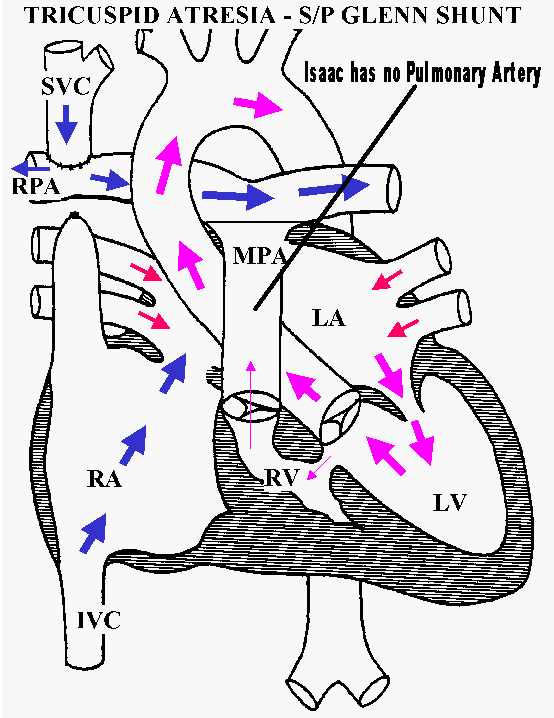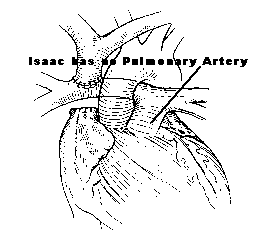
The Glenn procedure, the way it is currently performed involves hooking up the superior vena cava to the right pulmonary artery and detaching it from the right atrium. The bi-directional Glenn Shunt is a direct connection between the superior vena cava and the pulmonary artery, diverting half of the "blue" blood directly to the lungs without the assistance of the ventricle. It is usually performed between three and eight months of age, when the lungs mature to the point that blood flows more easily through, and ventricular force is no longer necessary. It is used as a procedure when there is only one good ventricle and more blood flow to the lungs is needed.
What are the risks of the Glenn procedure?
The Glenn procedure can be performed as an open or closed heart operation with the risks associated of each. There are always the risks of bleeding and infection. Special risks of the Glenn procedure are damage to the nerve that controls the diaphragm leading to diaphragmatic paralysis on one side, damage to a vessel that drains a special type of fluid to the heart called lymph, and damage to the pacemaker of the heart that is close to the superior vena cava. There is also a long term risk of the development of abnormal vessels within the lungs called arteriovenous malformations (AVMís) which allow blue blood from the body to bypass the lungs and go directly back to the heart and get pumped to the body. This can cause cyanosis (blueness) to develop, and is felt to be due to the absence of a substance in the blood from the liver to go to the lungs. It further felt that these can be made to disappear if the veins draining the liver are allowed to drain to the lungs as will occur with the Fontan procedure.
In the diagrams below, a heart with tricuspid atresia is shown after a Glenn operation. With tricuspid atresia, not enough blood flow can get to the lungs. An operation is usually performed after birth (a BT Shunt), though this is not always the case with certain variations of tricuspid atresia. Eventually, as the child grows and needs more blood with oxygen, the child "outgrows" the BT shunt, which is synthetic and does not grow with the child. In order to get more blood flow to the lungs, and decrease the amount of blue blood going to the body, a Glenn operation is performed. This means that the superior vena cava is disconnected or closed off from the right atrium and connected to the right pulmonary artery. This allows the blue blood to flow right to the lungs instead of mixing with oxygen-rich ("red") blood and flowing to the body. It is one half of a Fontan operation.
Below are some diagrams of the Glenn

